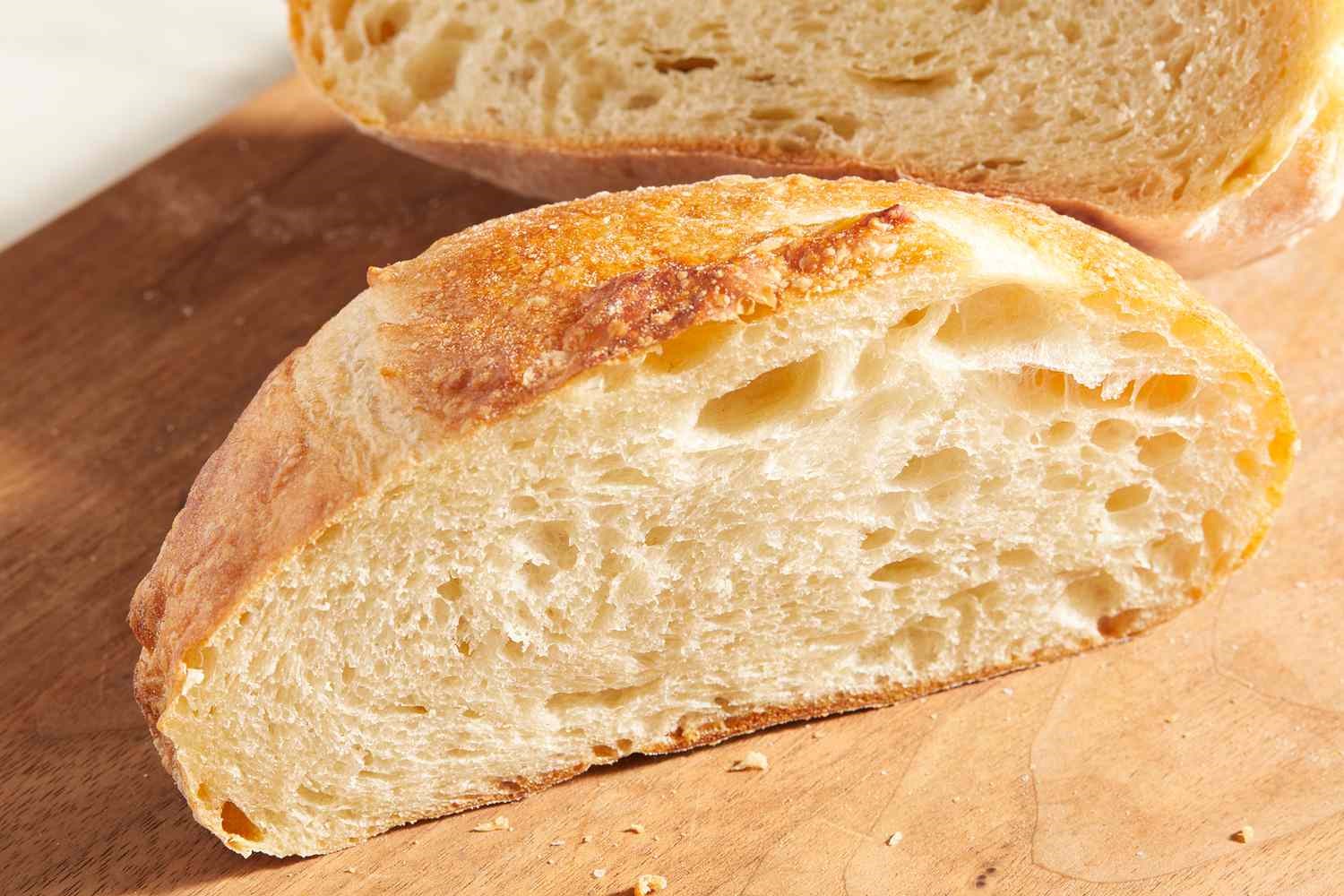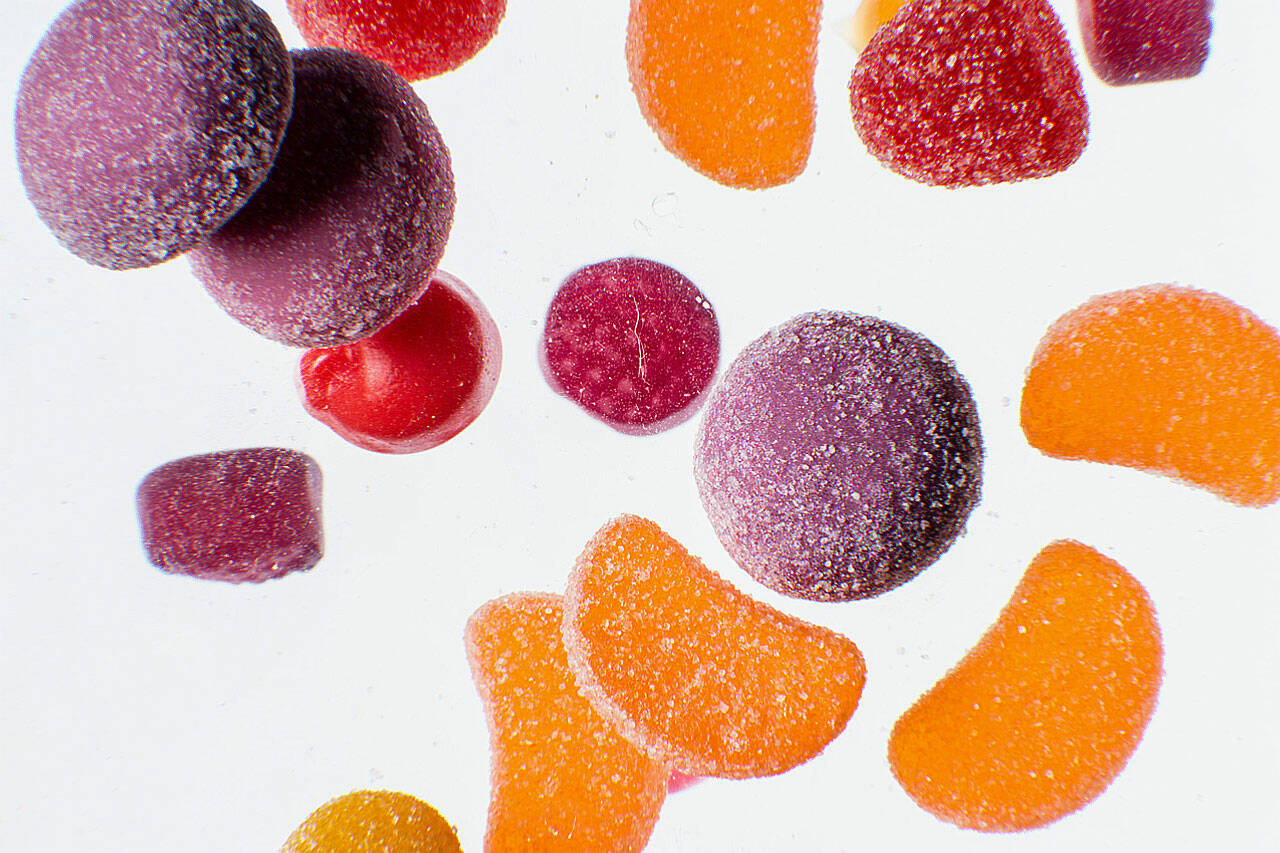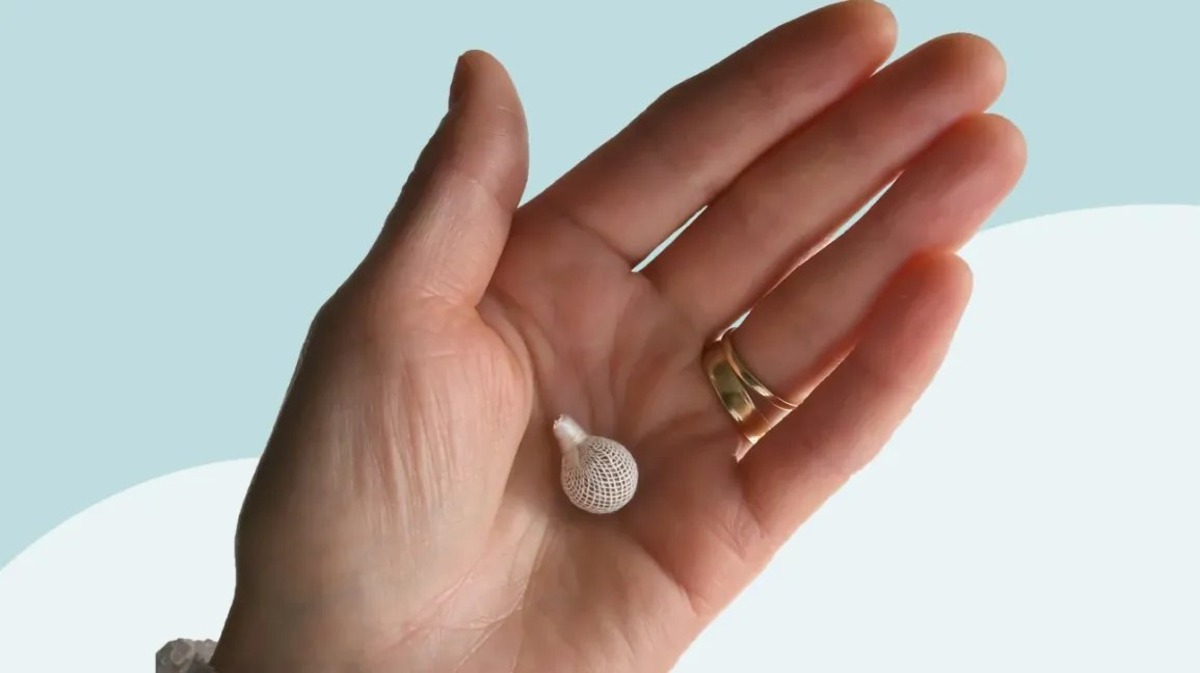Home>Food and Cooking>The Surprising Truth About Ciabatta Bread’s Health Benefits


Food and Cooking
The Surprising Truth About Ciabatta Bread’s Health Benefits
Published: February 12, 2024
Discover the health benefits of ciabatta bread and its impact on your well-being. Learn more about food and cooking with this surprising truth.
(Many of the links in this article redirect to a specific reviewed product. Your purchase of these products through affiliate links helps to generate commission for Noodls.com, at no extra cost. Learn more)
Table of Contents
Introduction
When it comes to bread, the choices seem endless. From fluffy white loaves to hearty whole grain varieties, each type offers a unique flavor and texture. Among these options, ciabatta bread stands out for its rustic appearance and delightful chewy texture. But beyond its appealing characteristics, ciabatta bread also holds some surprising health benefits that are worth exploring.
In this article, we will delve into the nutritional content of ciabatta bread, uncover its potential health benefits, and shed light on any drawbacks that may accompany its consumption. By the end, you will have a comprehensive understanding of this beloved Italian bread and how it can fit into a balanced diet.
Let's embark on a journey to unravel the truth about ciabatta bread's health benefits and discover the reasons why it has earned a place on the table of bread enthusiasts and health-conscious individuals alike.
What is Ciabatta Bread?
Ciabatta bread, originating from Italy, is a rustic, crusty bread known for its chewy texture and porous crumb. Its name, which translates to "slipper bread" in Italian, reflects its flat, elongated shape, resembling a slipper. This iconic bread is a staple in Italian cuisine and has gained popularity worldwide due to its versatility and distinct flavor profile.
The unique characteristics of ciabatta bread are attributed to its simple yet carefully crafted ingredients. Typically made from a combination of wheat flour, water, salt, and yeast, ciabatta dough undergoes a fermentation process that contributes to its signature chewiness and open crumb structure. The dough is often stretched and folded to develop gluten, resulting in a chewy interior and a crisp, golden crust when baked.
Ciabatta bread's artisanal nature sets it apart from mass-produced loaves, as it is often handcrafted by skilled bakers who take pride in preserving traditional baking techniques. This attention to detail and emphasis on quality ingredients contribute to the distinct flavor and texture that ciabatta bread is renowned for.
Whether used to create a satisfying sandwich, as a side to soak up flavorful sauces, or simply enjoyed with a drizzle of olive oil, ciabatta bread's versatility makes it a beloved choice for bread enthusiasts and culinary aficionados alike.
In summary, ciabatta bread is a beloved Italian bread known for its rustic appearance, chewy texture, and versatility in various culinary applications. Its simple yet carefully crafted ingredients and traditional baking techniques contribute to its distinct flavor and texture, making it a cherished staple in the world of bread.
Nutritional Content of Ciabatta Bread
Ciabatta bread, with its enticing aroma and artisanal appeal, offers a unique nutritional profile that sets it apart from other bread varieties. Understanding its nutritional content is essential for making informed dietary choices. Let's explore the key components that contribute to the nutritional value of ciabatta bread.
Macronutrients
Ciabatta bread primarily consists of carbohydrates, making it a significant source of energy. Additionally, it contains moderate amounts of protein and minimal fat. The carbohydrates in ciabatta bread provide the body with readily available energy, making it a satisfying choice for individuals with active lifestyles.
Fiber
While ciabatta bread is not as rich in fiber as whole grain bread, it still contributes to the daily fiber intake. Fiber plays a crucial role in digestive health and helps maintain a feeling of fullness, which can aid in weight management and overall well-being.
Micronutrients
Ciabatta bread contains essential micronutrients, including iron, which is important for oxygen transport in the body, and B vitamins, such as thiamine and niacin, which play a role in energy metabolism. While the levels of these micronutrients may vary based on the specific recipe and flour used, ciabatta bread can contribute to overall micronutrient intake.
Sodium Content
One aspect to consider is the sodium content in ciabatta bread, as it is often seasoned with salt for flavor. Individuals monitoring their sodium intake should be mindful of this, especially if consuming ciabatta bread regularly.
Overall Nutritional Profile
In summary, ciabatta bread offers a balance of macronutrients, providing carbohydrates for energy, a modest amount of protein, and minimal fat. While it may not be as rich in fiber as whole grain bread, it still contributes to daily fiber intake. Additionally, it contains essential micronutrients and is a source of dietary iron and B vitamins. However, individuals should be mindful of the sodium content, especially if following a low-sodium diet.
Understanding the nutritional content of ciabatta bread allows individuals to incorporate it into their diet mindfully, appreciating its unique qualities while considering their overall nutritional needs.
Health Benefits of Ciabatta Bread
Ciabatta bread, often celebrated for its delectable taste and artisanal charm, offers several surprising health benefits that make it a favorable choice for bread enthusiasts and health-conscious individuals. Let's delve into the notable health benefits associated with this beloved Italian bread.
1. Satisfying Energy Source
Ciabatta bread serves as a satisfying source of energy, thanks to its carbohydrate content. The carbohydrates in ciabatta bread are readily converted into glucose, providing a quick and accessible energy source for the body. This makes it an ideal choice for individuals with active lifestyles or those in need of a quick energy boost.
2. Versatile Culinary Applications
The versatility of ciabatta bread allows for the creation of wholesome and balanced meals. Whether used as a base for nutrient-rich sandwiches filled with fresh vegetables and lean proteins or paired with heart-healthy olive oil and balsamic vinegar, ciabatta bread can be incorporated into a variety of nutritious and satisfying dishes.
3. Moderate Fiber Content
While not as fiber-rich as whole grain bread, ciabatta bread still contributes to daily fiber intake. Fiber plays a crucial role in digestive health, promoting regularity and aiding in the maintenance of a healthy digestive system. Additionally, fiber can contribute to a feeling of fullness, potentially supporting weight management efforts.
4. Essential Micronutrients
Ciabatta bread contains essential micronutrients, including iron and B vitamins. Iron is vital for oxygen transport in the body, while B vitamins, such as thiamine and niacin, play a role in energy metabolism. Incorporating ciabatta bread into a balanced diet can contribute to overall micronutrient intake, supporting various physiological functions.
5. Enjoyable Eating Experience
The enjoyment derived from consuming ciabatta bread should not be overlooked. The act of savoring a freshly baked slice of ciabatta bread can contribute to overall well-being by providing a sense of satisfaction and pleasure. This positive relationship with food is an important aspect of a holistic approach to health and nutrition.
In summary, ciabatta bread offers a range of health benefits, including serving as a satisfying energy source, providing culinary versatility, contributing to fiber intake, supplying essential micronutrients, and enhancing the overall eating experience. By appreciating these health benefits, individuals can savor ciabatta bread as a delightful addition to a balanced and wholesome diet.
Potential Drawbacks of Ciabatta Bread
While ciabatta bread offers enticing flavors and a satisfying texture, it is important to consider potential drawbacks associated with its consumption. Understanding these aspects can help individuals make informed decisions about their dietary choices.
-
Caloric Density: Ciabatta bread, like many artisanal bread varieties, can be relatively high in calories. Its dense texture and chewy crumb are indicative of a higher calorie content compared to lighter, airier bread options. Individuals aiming to manage their calorie intake should be mindful of portion sizes when enjoying ciabatta bread to maintain a balanced diet.
-
Limited Fiber Content: Although ciabatta bread contains some fiber, it falls short in comparison to whole grain bread. Fiber plays a crucial role in digestive health and satiety, and the relatively lower fiber content in ciabatta bread may not provide the same level of digestive support and appetite control as fiber-rich alternatives.
-
Sodium Content: The addition of salt for flavor in ciabatta bread contributes to its sodium content. Excessive sodium intake can have implications for cardiovascular health, particularly for individuals with high blood pressure or those at risk of developing hypertension. Monitoring sodium intake, especially from sources like ciabatta bread, is essential for maintaining overall health.
-
Gluten Sensitivity: Ciabatta bread, like many traditional wheat-based breads, contains gluten. For individuals with gluten sensitivity or celiac disease, consuming ciabatta bread can lead to adverse digestive symptoms and long-term health complications. It is crucial for those with gluten-related conditions to opt for gluten-free bread alternatives.
-
Rapid Blood Sugar Spikes: The high carbohydrate content in ciabatta bread can lead to rapid spikes in blood sugar levels, especially in individuals with insulin resistance or diabetes. Managing carbohydrate intake, including that from bread, is essential for stabilizing blood sugar levels and overall metabolic health.
In summary, while ciabatta bread boasts delightful flavors and a distinct texture, it is important to be mindful of potential drawbacks such as its caloric density, limited fiber content, sodium levels, gluten content, and impact on blood sugar levels. By considering these factors, individuals can make informed choices about incorporating ciabatta bread into their diet while prioritizing overall health and well-being.
Conclusion
In conclusion, ciabatta bread, with its rustic charm and delightful chewy texture, offers a blend of enticing flavors and surprising health benefits. Its artisanal nature and versatile culinary applications make it a beloved choice for bread enthusiasts and individuals seeking a satisfying addition to their meals.
While exploring the nutritional content of ciabatta bread, we uncovered its role as a source of energy, moderate fiber content, and contribution to essential micronutrient intake. These aspects, combined with its enjoyable eating experience, highlight the potential health benefits that ciabatta bread can offer when incorporated into a balanced diet.
However, it is essential to approach ciabatta bread consumption mindfully, considering potential drawbacks such as its caloric density, limited fiber content, sodium levels, gluten content, and impact on blood sugar levels. By being aware of these factors, individuals can make informed decisions about including ciabatta bread in their dietary choices while prioritizing overall health and well-being.
Ultimately, ciabatta bread stands as a testament to the rich tradition of artisanal baking and the art of savoring simple yet flavorful ingredients. Its ability to evoke a sense of comfort and satisfaction through each bite contributes to its enduring appeal in the culinary world.
Whether enjoyed as a complement to a hearty soup, a base for a gourmet sandwich, or simply savored with a drizzle of olive oil, ciabatta bread invites individuals to embrace the pleasures of good food while considering the balance between indulgence and nourishment.
In the tapestry of bread varieties, ciabatta bread holds a special place, weaving together tradition, flavor, and a touch of Italian heritage. By understanding its nuances and appreciating its unique qualities, individuals can savor ciabatta bread as a delightful addition to their culinary repertoire, celebrating both its artisanal craftsmanship and the joy of wholesome eating.












